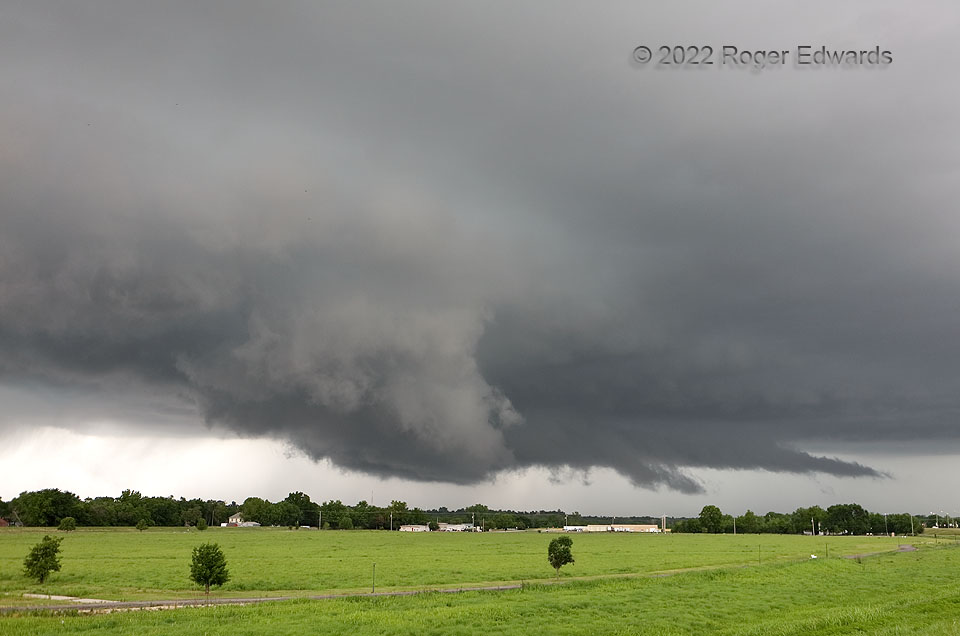A previously unassuming, strung-out and poorly organized supercell hit a plume of greater low-level moisture and vorticity, accompanying a modified outflow boundary from the previous night’s thunderstorms. It got happy quickly. This wall cloud formed fast and rotated strongly. The front-lit scud lowering in the foreground raced left to right as cloud material in the background pulled the other way, from the tail cloud that can be seen extending into the forward-flank area. I was surprised this did not produce a tornado, but glad, as the circulation was hovering over the northern side of Arkansas City, and could have caused casualties. The storm also was potentially deadly in another way, slamming bright, forked, close, staccato lightning all around us, every 10–15 seconds. This meant that even the usual exercise of timing car exit for a few seconds, just after a nearby CG to take advantage of “recharge time”, was disconcertingly risky. As such, I only got this and one similar photo of this stage. This supercell would produce a few more fast occlusions, some rain-wrapped, before moving into the Flint Hills road hole. Another would develop very late in the day and move along this storm’s outflow boundary, merging with yet a third in twilight.
Arkansas City KS (31 May 22) Looking NW
37.0707, -97.0261
